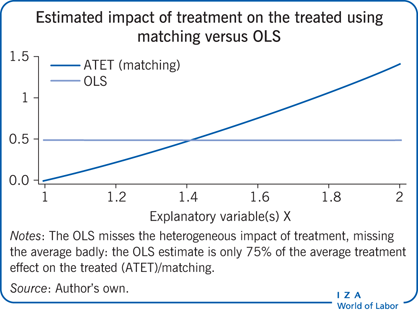Elevator pitch
“Matching” is a statistical technique used to evaluate the effect of a treatment by comparing the treated and non-treated units in an observational study. Matching provides an alternative to older estimation methods, such as ordinary least squares (OLS), which involves strong assumptions that are usually without much justification from economic theory. While the use of simple OLS models may have been appropriate in the early days of computing during the 1970s and 1980s, the remarkable increase in computing power since then has made other methods, in particular matching, very easy to implement.

Key findings
Pros
Matching allows for the estimation of causal effects without relying on such strong assumptions, which makes its results more reliable.
Matching allows the researcher to balance two problems that plague statistical estimation: bias and variance.
The potential lack of similar individuals in treatment and comparison groups is highlighted by matching.
Cons
Matching can be computationally intensive.
Both matching and OLS still rely on strong assumptions about the exogeneity of the treatment, which makes results less reliable.
Matching requires decisions at several steps of the process that may bias the estimates and limit their precision.